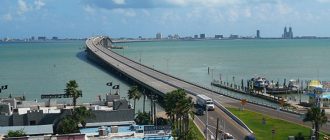Peru has many iconic sites to see (Machu Picchu, Lake Titicaca, downtown Lima) and things to do (eat guinea pig, surf the waves in Mancora, take a boat through the Amazon) but I have another iconic Peruvian item to add to your list – ride a Mototaxi.
Riding a mototaxi has become a famous Peruvian travel tradition. The less than safe looking transportation option can be found throughout the country but is more common in smaller cities and in rural communities. Think of them as a cab – just less safe, slower, and louder. On the plus side, they are great when you need a bit of a breeze on your face in hot, coastal Peruvian towns.
Traveling By Mototaxi From Peru to Central America
While the mototaxi has become iconic in Peru, they are actually found throughout Central and South America and even around the world in different forms. We all know the famous auto rickshaws from India, or tuk tuks in Thailand… same concept.
The mototaxi version in Peru and elsewhere in Latin America tends to be simple, a bike with a seat added on the back, hopefully with a roof, and sometimes with doors or plastic panels to keep the rain out. Occasionally you will see a Bajaj, which is actually the name of one of the mototaxi manufacturers, but refers to the more enclosed mototaxis with metal side panels and the bike almost completely covered. These Bajaj look a bit safer, offer more protection in an accident, and have less of a thrown together look, but are much more expensive to buy and as such a bit rarer on the streets of Peru.
Pimped Out Mototaxis
In Peru, the mototaxis go from basic and plain to fully pimped out. The basic style is cheap and consists of a motorcycle with a strapped on rear section with a seat for 2-3 people. From there, owners slowly add on additional items including rain panels, flashy paint jobs, luggage racks, stereos, custom horns, and usually a few superhero or Nike logos thrown on the back. Many drivers don’t actually own the mototaxi; they just rent it from a company each day. You can usually tell what mototaxi drivers own their vehicles due to how “pimped out” and customized they are.
Peru Mototaxi Junket Racing
With such a fun looking ride, it became inevitable that a few travelers would want to try driving a mototaxi. These small vehicles are notoriously hard to drive – with lousy motors that never make it up to speed, funky steering, and a constant rumbling, bumpy ride. Despite that, every year a bunch of travelers head to Peru for the sole mission of driving a mototaxi across Peru. Mototaxi Junket, put on by The Adventurists, sets up a multi-week mototaxi race every year around October for teams of travelers. Don’t worry, you won’t be risking your life solely for the “fun of it.” The whole event is also a fundraising effort for charities.
Even if you don’t head to Peru for the official Mototaxi Junket, you can sometimes find a driver who will let you practice driving, for an extra fee.
Peru Mototaxi Safety
Be sure you set the price before jumping in. There is usually a set standard price depending on distance, almost always higher for tourists, and it is helpful to have an idea of the “right price” before taking a ride.Mototaxis are best taken on smaller side streets and in less trafficked areas. They offer little to no protection in the case of an accident and are not easily seen on the road by larger vehicles.Keep all hands and legs inside the vehicle at all times. Seriously, drivers will try and fit through very small spaces and you don’t want to lose a foot.
Original article by Chelsea Schmidt.





